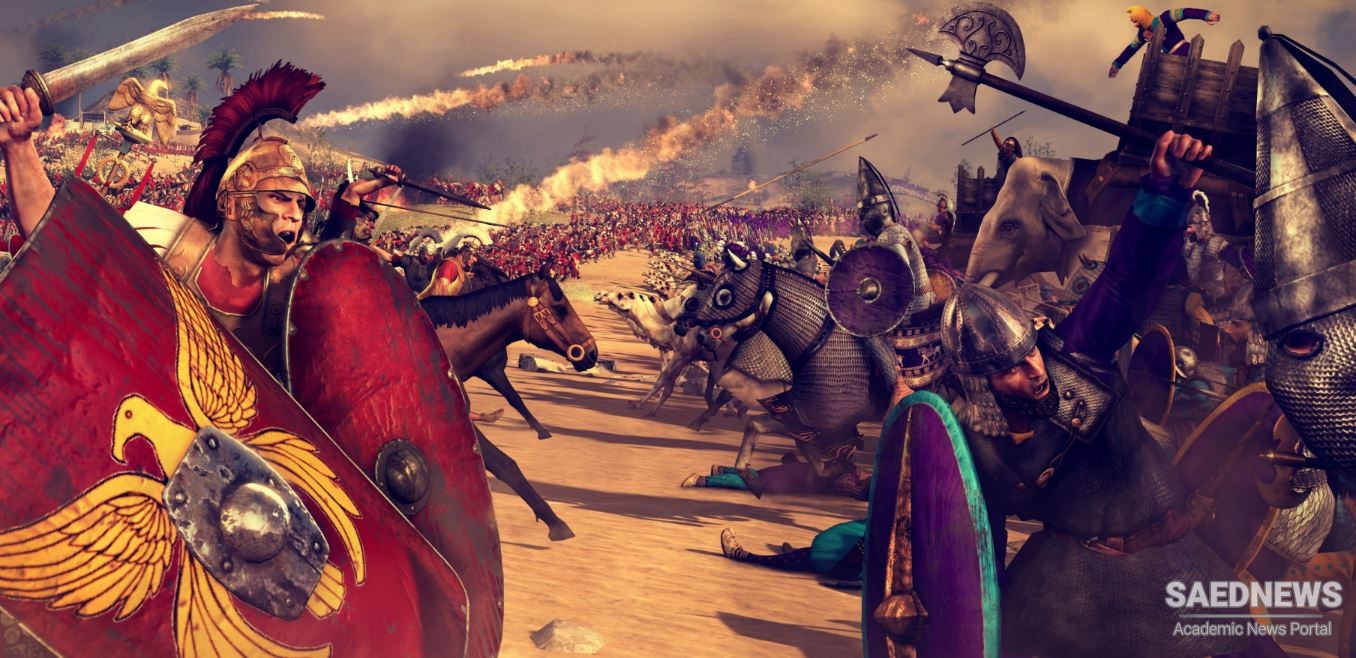Ardashlr besieged Nisibis (at present Nusaybin in Turkey on the Iraq frontier) in 230, and his forces raided Syria and elsewhere in the Roman east. The Romans tried to make peace with the Sasanian ruler but failed. Alexander Severus, after more fruitless negotiations with Ardashlr, set out against him in 232. One column of his army marched into Armenia to aid the Armenians, while two other columns operated to the south. We do not know the course of events, but the northern column seems to have been successful, whereas the others failed, mostly on account of physical hardships. In any case, Ardashlr was repulsed and Alexander Severus celebrated a triumph in Rome.
The murder of Alexander Severus in 23 5 and the subsequent troubles in the Roman empire may have induced Ardashlr to attack again. The dates are uncertain, but towards the end of his reign, probably in 238, he took both Carrhae and Nisibis. We may surmise that not long thereafter Ardashlr allowed his son Shapur to rule jointly with him, as coins with busts of both men suggest. Since the dates of the end of Ardashlr's reign and the accession and coronation of Shapur are disputed, we have almost five years in which certain events may be placed. One of the most important was the capture of Hatra, the trading and caravan city in the desert between the Tigris and Euphrates. Hatra had withstood sieges of Trajan, Septimius Severus and Ardashlr. The attack of the last had changed the animosity of Hatra against the Romans into an alliance. Hatra may have been integrated into a defence system of Roman limes initiated in northern Mesopotamia by Caracalla and continued by Alexander Severus. At all events, Ardashlr captured the city, and this may have been one event which provoked a Roman counter-thrust.
Because of internal difficulties including the rapid change of emperors, the Romans could not move against the Persians for several years, and it was not until 243 that Gordian advanced against Shapur. In the meantime, Shapur had been busy, according to the Chronicle of Arbela, in subduing the Khwarazmians and the people of Gllan on the Caspian Sea coast. Whatever the chronology of events in the first years of Shapur, in his first clash with Rome the Persians were on the defensive. Carrhae and Nisibis were retaken by the Romans and the Persians were defeated at a battle near Resaina. Some time after the battle the praetorian prefect Timesitheus, who was the power behind the young emperor Gordian, died, presumably of illness, and was replaced by Philip, who was an Arab. In 244 the two armies met in battle at Massice, or Anbar, not far from Ctesiphon, and Shapur won. After the battle, he gave a new name to the town, Peroz-Shapur or "victorious is Shapur". The emperor Gordian either died in the battle or was murdered by his own men, and Philip became emperor.
Philip paid a ransom of 500,000 gold dinars to Shapur, according to Shapur's great inscription. He also probably agreed not to aid the Armenians against Shapur, for the Arsacid king of Armenia was still a bitter enemy of the Sasanians. Unfortunately, information about events in Armenia is lacking and we must rely on probable inferences. The Arsacid king of Armenia, according to the Armenian sources of Agathangelos and Moses of Khorene, was called Khosrov and he was assassinated at the instigation of the Sasanian king. No dates are given, but it probably happened under Shapur rather than Ardashir, presumably about A.D. 252. The son of the Armenian king Tiridates fled to Roman territory and this is probably the reason for Shapur's decision to reopen hostilities against Rome.
In his inscription Shapur says (Parthian line 4, Greek line 10), "Caesar again lied and did wrong to Armenia, and we attacked the Roman empire". The date of this campaign is disputed, for both 253 and 256 have partisans. A solution to the problem may be that two campaigns have been combined into one, a preliminary raiding in 253 and a more successful expedition in 256. In the latter year a Roman army of sixty thousand was destroyed at Barbalissus and Syria was laid waste. Dura Europus and the city of Antioch were among the many towns captured and the Christian bishop of Antioch, Demetrianus, was one of the captives settled at a new town in Khuzistan called Veh Antiok Shapur ("Better than Antioch [has] Shapur [built this]"), which became corrupted later into Gundeshapur.


 The Early Development of Shia Islam: Prophecy and Its Continuation
The Early Development of Shia Islam: Prophecy and Its Continuation














































